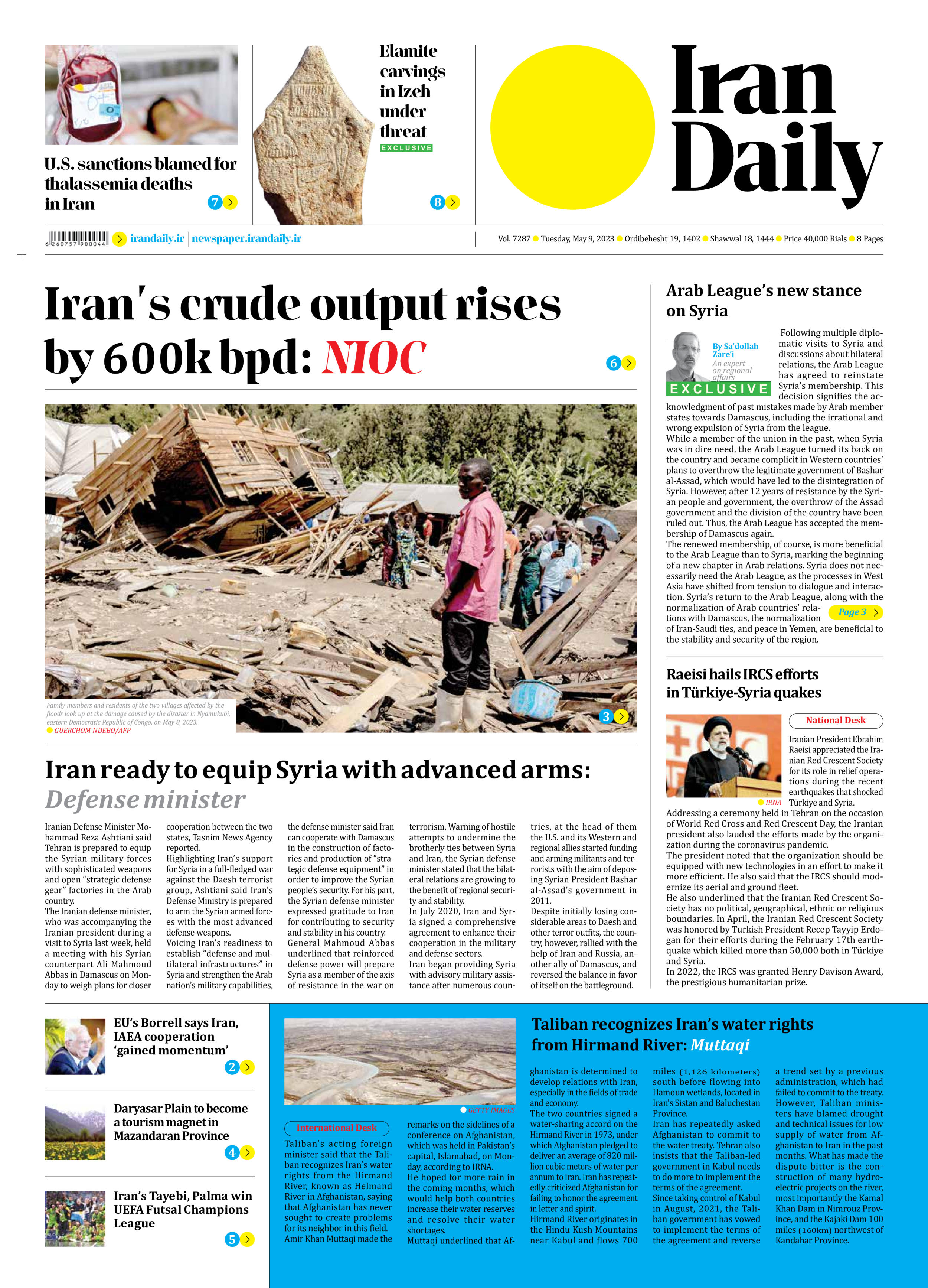
Iran’s crude output rises by 600k bpd: NIOC
The CEO of National Iranian Oil Company announced the daily increase of 600,000 barrels of crude oil production in the current government and said, “This year’s plan is to increase production and use various measures in line with this issue.”
Mohsen Khojasteh-Mehr stated that we have a gas shortage in the country, so if we don’t have investment and new technology, we will have a shortage in the oil sector as well.
He said 50 percent of the research budget of the Ministry of Oil is dedicated to the National Iranian Oil Company, of which 50 percent is allocated to universities, and now we are cooperating with universities in a problem-oriented way.
He added that so far, six contracts have been signed regarding the restoration of oil wells, and we expect this trend to continue. The increase in oil and gas extraction is one of our key issues.
“If we can have a one percent increase in extraction in the country’s oil reserves, we will have eight billion barrels in reserves. Extractable will be added.”
The NIOC head stated that the most important challenge in gas production is excessively high domestic consumption, adding that we spend 14.5 percent of the country’s oil and gas revenues to boost the country’s gas production capacity.
Khojasteh-Mehr said that the South Pars joint field contains about 50 percent of Iran’s gas reserves and now accounts for 70 percent of Iran’s gas production.
“At the beginning of the current government, due to the shortage and export obligations, we tried to increase gas production, so that for the first time, 705 million cubic meters of gas were produced from 37 South Pars platforms in the Persian Gulf, and a new record was made.”
Production to start from SP Phase 11
Khojasteh-Mehr said that early production from Phase 11 is on the agenda and so far four wells have been drilled and its offshore pipelines were transferred to onshore areas.
The ground has been paved to move Platform C of Phase 12 of South Pars to the location of Phase 11 and the platform will be installed soon.
He said that on the other hand, the tender for the construction of the jacket and the second platform of Phase 11 has been held and efforts are being made to start production with a capacity of 11 million cubic meters per day before winter.
“These measures are very valuable and at the international level, which are being done by Iranian engineers and specialists, while it was believed that only Total could do it.”
The NIOC head said that we have recently reached a new exploration target in Balal field, as we are constructing a jacket to exploit this field.
“We will start development programs, based on planning for acidizing 400 wells in the South Pars gas field to improve and increase production; on the other hand, planning to drill 35 new wells in South Pars and holding tenders for them is being implemented with the aim of compensating for the drop in production.”
Khojasteh-Mehr stated that we had sweetening operations in the second and third phases of South Pars to produce 80,000 barrels of sweet gas condensate per day, which was one of the reasons for the increase in production.
Collecting 80% of gas flares
Emphasizing that NIOC’s serious plan is to pursue the projects of collecting flare gases, he said, “In the recent visit of the president to Khuzestan Province, three gas and liquefied gas plants were put into operation, which collect 850 million cubic feet of flare gas daily.”
He added that currently 80 percent of the flare gases of Khuzestan Province and some neighboring provinces are being collected and our plan is to collect 100 percent.
Khojasteh-Mehr stated that the number of new technology-based firms (NTBFs) in the oil and gas industry has increased from 150 to 500.
Stating that this year the seventh development plan of Iran will be ratified, and in this plan, the increase in production and surge in extraction is highlighted, he said we must make the NIOC production oriented.
The official added that most of our research activities were related to the growth of oil and gas production.
We should focus more on this issue as a common corrosion in offshore and land pipelines affects our production. For example, a corrosion case in Phase 16 offshore pipeline reduced the country’s gas production by more than 28 million cubic meters.
According to Khojasteh-Mehr, oil and gas production must be technology-based so that we can boost it.
“If we can improve the quality of infrastructure in the oil industry, we will be able to increase production.”







